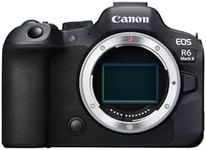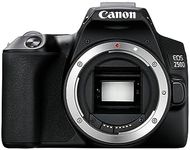Buying Guide for the Best Canon DSLR Cameras
Choosing the right Canon DSLR camera can be a rewarding experience, especially if you know what to look for. Whether you're a beginner, hobbyist, or professional photographer, understanding the key specifications will help you make an informed decision. Here are some important specs to consider when selecting a Canon DSLR camera.Sensor SizeThe sensor size in a DSLR camera determines the quality of the images and how well the camera performs in low light conditions. Larger sensors, such as full-frame sensors, capture more light and detail, making them ideal for professional photography. APS-C sensors are smaller but still offer excellent image quality and are more affordable, making them suitable for hobbyists and beginners. Consider your photography needs; if you plan to shoot in various lighting conditions or require high detail, a larger sensor may be beneficial.
MegapixelsMegapixels refer to the resolution of the camera's sensor and indicate how many pixels the camera can capture in an image. Higher megapixels mean more detail, which is useful for large prints and cropping images without losing quality. For general photography, 16-24 megapixels are usually sufficient. If you need extremely high resolution for professional work, look for cameras with 30+ megapixels. Think about how you plan to use your photos; if you need high detail for professional prints, opt for higher megapixels.
ISO RangeISO range measures the camera's sensitivity to light. A wider ISO range allows for better performance in low light conditions without using a flash. Cameras with higher ISO capabilities can capture images in darker environments while maintaining quality. For everyday photography, an ISO range of 100-6400 is typically adequate. If you often shoot in low light or need flexibility in various lighting conditions, look for cameras with extended ISO ranges, such as 100-25600 or higher.
Autofocus SystemThe autofocus system determines how quickly and accurately the camera can focus on subjects. More autofocus points and advanced systems provide better focus performance, especially for moving subjects. Entry-level cameras may have fewer autofocus points, which is sufficient for general use. For sports, wildlife, or action photography, a camera with a sophisticated autofocus system and numerous focus points will be beneficial. Consider what types of subjects you will be photographing and choose a camera with an autofocus system that matches your needs.
Continuous Shooting SpeedContinuous shooting speed, or burst rate, indicates how many frames per second (fps) the camera can capture in a continuous burst. Higher fps is useful for action photography, allowing you to capture fast-moving subjects with precision. Entry-level cameras may offer around 3-5 fps, which is adequate for general use. Professional models can offer 10 fps or more, ideal for sports and wildlife photography. Think about whether you need to capture fast action and choose a camera with a burst rate that suits your requirements.
Video CapabilitiesMany DSLR cameras offer video recording capabilities, with varying resolutions and frame rates. Full HD (1080p) is standard and suitable for most users, while 4K resolution provides higher quality and more detail for professional video work. Consider whether you plan to use the camera for video recording and what level of quality you need. If video is a significant part of your work, look for cameras with advanced video features, such as 4K resolution and high frame rates.
Build Quality and ErgonomicsBuild quality and ergonomics refer to the camera's construction and how comfortable it is to use. Professional cameras often have robust, weather-sealed bodies that can withstand harsh conditions, while entry-level models may be lighter and more compact. Ergonomics are important for long shooting sessions; a camera that feels comfortable in your hands can make a big difference. Consider where and how you will be using the camera and choose one that offers the durability and comfort you need.
ConnectivityConnectivity options, such as Wi-Fi, Bluetooth, and NFC, allow you to transfer images wirelessly, control the camera remotely, and share photos easily. These features can be convenient for social media sharing and remote shooting. If you value quick and easy sharing or remote control capabilities, look for cameras with built-in connectivity options. Think about how you plan to use your camera and whether these features will enhance your photography experience.


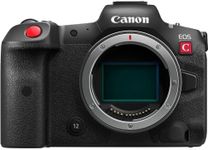
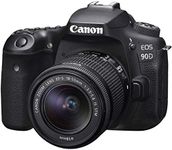

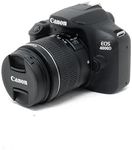
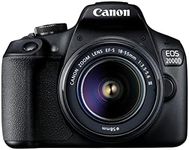
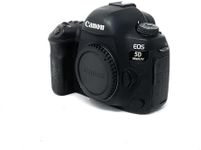
![Canon DSLR Camera [EOS 90D] with 18](https://images-proxy.bestreviews.guide/NUbAQ1DSQ9Nipl1KRWxTW9-gdks=/0x150/https://m.media-amazon.com/images/I/41x7s1MUFOL._AC_CX679_.jpg)
